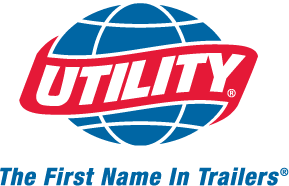Marketing Manager Utility Trailer Manufacturing Co @UTMCorporate
Is There a Smart Life Cycle for a Trailer?

Many businesses have life cycle plans for their trailers, which typically vary based on whether their fleet operates dry vans or reefers. Some fleets view dry vans as more of a commodity and treat them as such. They perform minimal maintenance, squeezing every mile of performance out of their trailers; operating their fleets until their trailers are no longer operable.
Fleets that offer temperature-controlled transport tend to view their reefers as more of an investment. This difference in perspective has everything to do with the nature of what is being shipped. Perishables require temperature integrity, with the risk of loss being greater. Therefore, attention to maintenance is essential. 
Whereas a dry van may be driven to the bitter end, many in refrigerated transport purchase reefers with a life cycle in mind. In conversations with businesses in refrigerated transport, they look to maximize depreciation for their reefer, while gaining top-dollar on the secondary market. Anecdotal data from various nationwide commercial vehicle auction houses, indicates that a used 3000R® typically brings more money at auction than other brands.
What shortens a trailer’s life cycle? The two main reasons are lack of maintenance, and an improperly spec'd trailer for the products a fleet is hauling. For example, a dry van will wear out quicker if used for the wrong load. We have engineered the 4000D-X Composite® TBR specifically for heavy-duty applications. It features a Tall Bottom Rail that is 10” taller and 50% thicker than our standard bottom rail. This makes the side wall stiffer and able to stand up to heavier, awkward loads. Our 3000R continues to elevate durability to higher levels as well. Today, our base spec reefer comes standard with a 20K aluminum duct floor to deliver longer floor life.
To extend the life of a reefer and dry van, everything underneath should regularly be inspected, including suspension, brakes, frame, etc. But for a reefer, it is the box, especially the side walls that need careful, consistent attention. Where a dry van can be patched (believe us, we have seen some creative patchwork) it is essential that a reefer maintains the integrity of its interior walls and floor.
Reefer side walls and floor must be kept clean and any caustic road salts and chemicals must regularly be removed with non-caustic cleaners. In addition, punctures in the side walls from loading and unloading must be professionally repaired to keep moisture from invading the side wall. Moisture degrades or breaks down the insulating foam, causing the trailer to lose thermal efficiency, and it also causes a reefer to gain weight.
What is a smart life cycle plan for a reefer or dry van? There is no determined standard, but ongoing maintenance will lengthen a trailer’s life, maximizing its trade-in value for its second life cycle. 
Want to learn more? Visit Utility at TMC Fall Meeting, September 12 - 16 in Cleveland, OH, and IFDA Distribution Solutions Conference, September 12 - 14 in Fort Worth, TX.
Utility Trailer Manufacturing Company is America's oldest privately owned, family-operated trailer manufacturer. Founded in 1914, the company designs and manufactures dry freight vans, flatbeds, refrigerated vans, Tautliner® curtainsided trailers, and aerodynamic technologies. Utility currently operates six trailer manufacturing facilities across North America. Utility’s 3000R® and the 3000R® multi-temp refrigerated trailers are manufactured at the Atkins, Virginia, Clearfield, Utah and Piedras Negras, Mexico plants. The 4000D-X Composite® series and 4000D® dry vans are manufactured at the Glade Spring, Virginia and Paragould, Arkansas plants. The 4000AE®, 4000S®, and 4000AE® Drop Deck flatbeds as well as the Tautliner® are all manufactured at the Enterprise, Alabama facility. Utility also has an extensive independent dealer network with over 100 locations throughout the United States, Canada, Mexico and South America. Visit: www.utilitytrailer.com for more information.
The above article is sponsor-generated content. To learn more about sponsor-generated content, click here.



